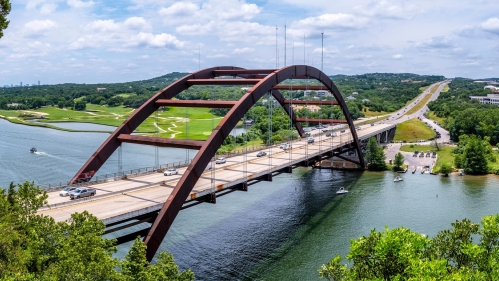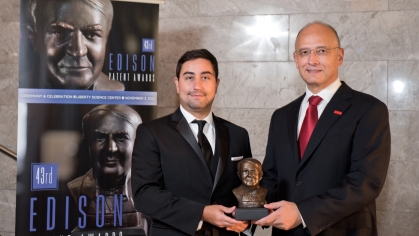Rutgers Receives $5M for Project to Improve Bridge Safety Through AI-Powered Database

Rutgers Center for Advanced Infrastructure and Transportation (CAIT) received $5 million over five years from the U.S. Department of Transportation (USDOT) to develop a clearinghouse of the latest innovations in bridge safety that incorporates artificial intelligence (AI) technology.
The Advanced Bridge Technology Clearinghouse (ABTC) platform will use AI to rapidly scan and evaluate extensive bridge data and publications and assist with queries.
Forty-two percent of all bridges across the United States are at least 40 years old, and nearly 8 percent are considered structurally deficient, according to Rutgers professor Nenad Gucunski, who serves as chair of the Department of Civil and Environmental Engineering and is the project’s principal investigator.
“As these bridges age and face additional stresses from climate change and increased traffic loads, there is an urgent need for innovative solutions that can ensure the long-term safety and sustainability of these structures,’’ Gucunski said.
Based at Rutgers School of Engineering, CAIT is leading the effort on behalf of the USDOT’s National Center for Infrastructure Transformation (NCIT), which is focused on improving the durability and extending the life of transportation infrastructure.
The ABTC digital platform will provide bridge operators including state officials and engineers with a dedicated “one-stop-shop” to find technically robust and unbiased information on the latest innovations in all aspects of bridge engineering – from bridge materials, design, and construction to asset management, condition assessment, monitoring and more.
“Located in a region home to some of the oldest bridges in the U.S., CAIT researchers understand the importance of this work,’’ says Ali Maher, CAIT director and civil and environmental engineering professor at Rutgers.
“The ABTC platform has the potential to facilitate the adoption of necessary innovations – paving the way for a future where bridges are models of safety, resilience against climate change, and sustainability. Today’s transportation workforce requires data-driven approaches and innovative technologies to best maintain our bridge network and enhance it for the future,’’ he said.
A diverse team of industry and academic experts has been assembled to manage the platform. They will manually check all database entries, ensure accurate technology evaluations, and provide tailored responses to user questions.
According to Gucunski, moving solutions from paper into practice is a formidable challenge that the ABTC will work to address by serving as a hub for bridge technology and best practices.
“Through a convergence of expert collaboration, rigorous evaluation, and proactive outreach, the ABTC platform aspires to be the nexus where innovation meets application,” he says. “Leveraging our combined resources to continuously identify, evaluate, and share technology developments, ABTC can ensure that asset owners have the rights tools and knowledge to maintain bridges that are not only structurally sound and robust but also environmentally responsible and future-ready.”
Rutgers researchers are joined by academic partners through NCIT, a USDOT University Transportation Center led by Prairie View A&M University, including Arizona State University, Blinn College District, Michigan State University, the Texas A&M Transportation Institute, and Texas A&M University.
This cluster of experts includes leading researchers in bridge and infrastructure management, construction, materials, data analytics and software tools, and information science. They are joined by engineering and software development firms that will help to build the ABTC platform over the next five years.
“The NCIT consortium is proud to support USDOT in this effort to develop an innovative bridge clearinghouse,” says Judy Perkins, NCIT director and professor at Prairie View A&M University. “This project has the potential to transform how the transportation industry manages its bridges, with a focus on sustainability, environmental stewardship, and resilience. NCIT members look forward to collaborating on this new initiative, leveraging our combined expertise, and building a successful bridge clearinghouse.”


